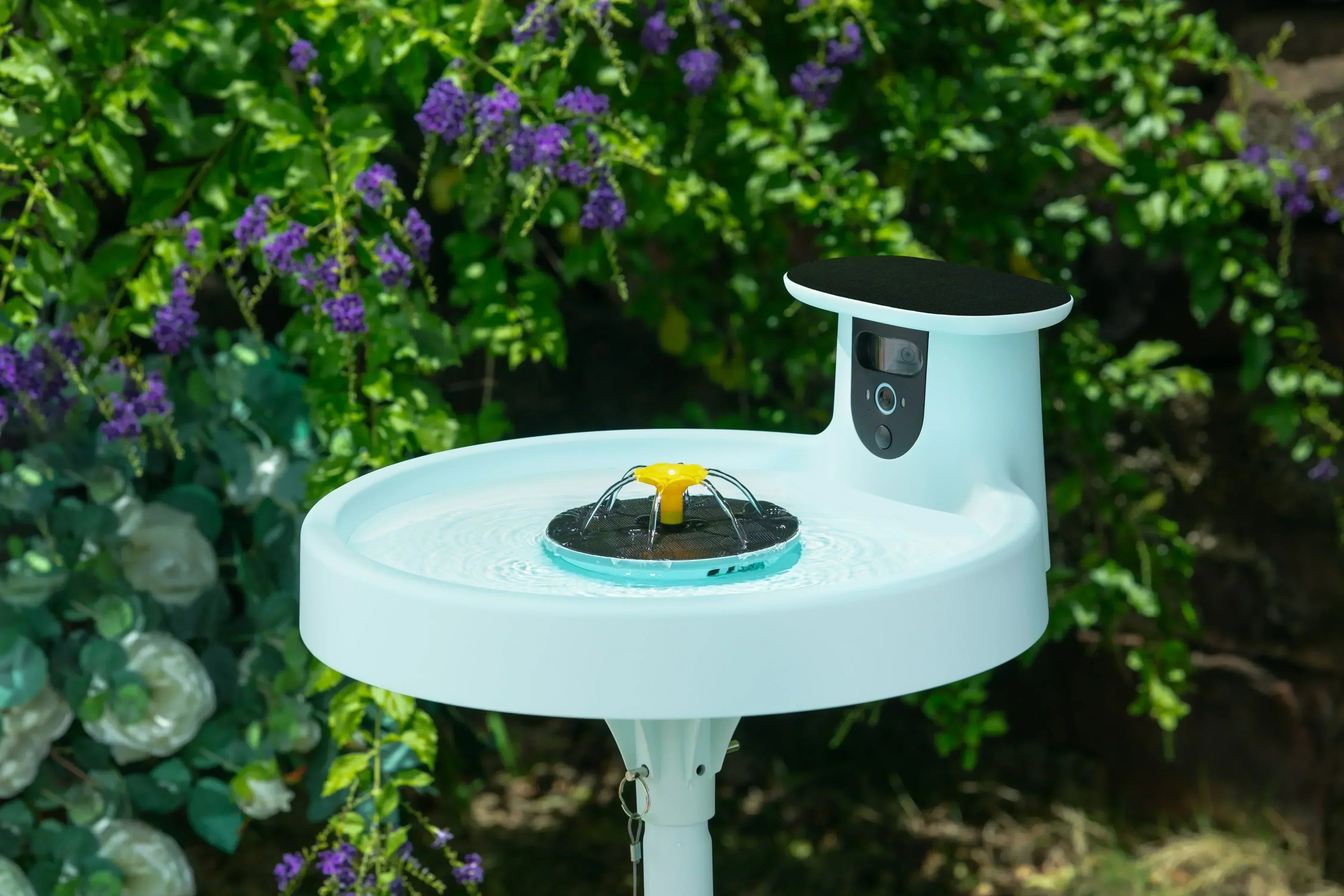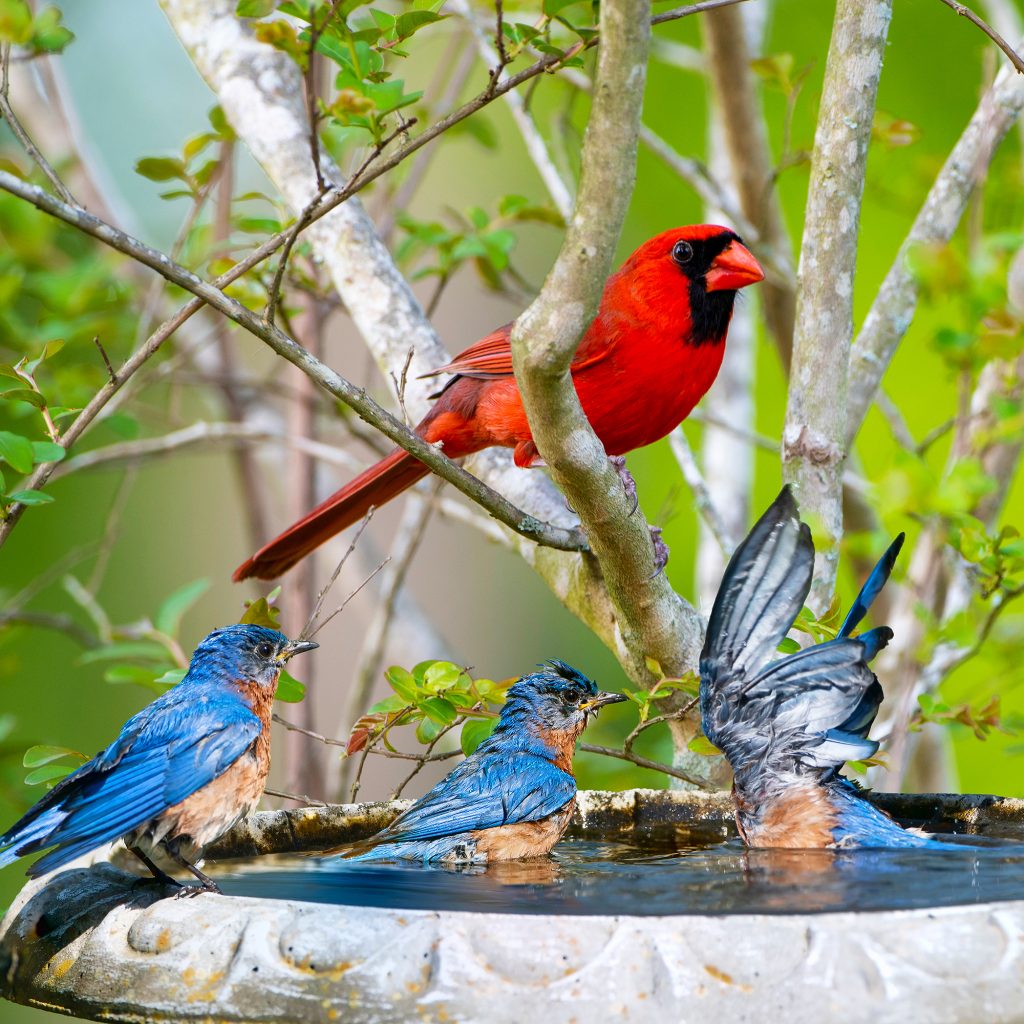Do you want to turn your open spaces into a lively haven filled with colorful birds? Imagine stepping outside and seeing a variety of birds fluttering around, singing, and adding a touch of nature’s beauty right at your doorstep.
Attracting birds to your yard or garden isn’t as hard as you might think. With a few simple steps, you can create a welcoming environment that birds will love. Keep reading to discover easy and effective ways to invite these feathered friends to your open spaces and enjoy the peaceful joy they bring every day.

Credit: www.birdfy.com
Choose The Right Location
Choosing the right spot in open spaces helps attract more birds. Birds look for safe and comfortable places to visit.
Understanding what birds like and dislike about locations makes it easier to invite them to your area.
Open Space Features Birds Prefer
Birds enjoy open spaces with a mix of shelter and food sources. They need places to rest and hide from predators.
- Nearby trees or shrubs for cover and nesting
- Access to fresh water like birdbaths or ponds
- Open ground for foraging insects or seeds
- Sunlight spots for warmth and visibility
- Minimal noise and human disturbance
Avoiding Common Hazards
Some dangers can keep birds away or harm them. Avoiding these hazards helps keep your space bird-friendly.
| Hazard | Effect on Birds |
| Predators like cats | Birds avoid the area |
| Window reflections | Bird collisions and injuries |
| Strong chemicals or pesticides | Poisoning and food loss |
| High human traffic | Birds feel unsafe and leave |

Credit: www.birdfy.com
Provide Food Sources
Birds need food to stay healthy and active. Providing food sources in open spaces helps attract different bird species. You can offer natural and supplemental food to meet their needs.
By choosing the right plants and using feeders correctly, you create a welcoming environment. Birds will visit often if they find easy food options.
Selecting Bird-friendly Plants
Planting native trees, shrubs, and flowers gives birds natural food like seeds, berries, and nectar. These plants also attract insects that birds eat.
- Choose plants with berries and seeds that ripen at different times.
- Use plants that provide nectar for hummingbirds and butterflies.
- Include a variety of plant heights for different bird species.
- Avoid using pesticides that can harm birds and insects.
Using Feeders Effectively
Feeders add extra food to attract birds. Place them in safe, quiet spots where birds feel secure. Clean feeders often to prevent disease.
| Feeder Type | Best Food | Birds Attracted |
| Tube Feeder | Mixed Seeds | Finches, Sparrows |
| Suet Feeder | Suet Cakes | Woodpeckers, Nuthatches |
| Hummingbird Feeder | Sugar Water | Hummingbirds |
| Platform Feeder | Fruits, Nuts | Cardinals, Jays |
Create Water Spots
Birds need water for drinking and bathing. Open spaces can attract many birds if you add water spots. These spots help birds stay healthy and clean.
Water spots also bring life to your garden. You can choose different types of bird baths and keep the water fresh. This will invite more birds to visit often.
Types Of Bird Baths
Bird baths come in many shapes and sizes. Some are simple bowls, while others are decorative fountains. Choose one that suits your space and style.
- Shallow Bowls:Easy for small birds to land and drink.
- Pedestal Baths:Raised off the ground to keep water clean.
- Fountains:Moving water attracts birds and keeps water fresh.
- Hanging Baths:Save space and offer safety from predators.
- Natural Ponds:Create a small pond with stones and plants for a natural feel.
Maintaining Clean Water
Clean water is important for birds’ health. Dirty water can spread diseases and scare birds away. Change the water often and keep the bath clean.
| Task | Frequency |
| Change water | Every day or two |
| Clean bath | Once a week |
| Remove debris | Daily |
| Check for algae | Weekly |
Offer Shelter And Nesting Sites
Birds need safe places to rest and raise their young. Open spaces can feel empty to them without cover. Providing shelter and nesting sites makes these areas more inviting.
Shelter protects birds from weather and predators. Nesting sites give birds a place to build homes and care for their chicks.
Planting Shrubs And Trees
Shrubs and trees offer natural shelter and nesting spots. They also provide food and protection from predators. Choose native plants to support local birds best.
- Plant dense shrubs like hawthorn or holly
- Include trees with thick branches and leaves
- Mix evergreens and deciduous plants
- Provide a variety of heights and cover types
Installing Nest Boxes
Nest boxes give birds secure places to lay eggs. They are helpful where natural cavities are scarce. Place boxes at different heights for different species.
| Type of Bird | Box Size (inches) | Height (feet) | Placement Tips |
| Bluebirds | 5 x 5 x 10 | 4 to 6 | Open area, facing away from wind |
| Wrens | 4 x 4 x 8 | 5 to 10 | Near shrubs or trees, shaded |
| Chickadees | 4 x 4 x 8 | 6 to 15 | Quiet, sheltered spot |
Minimize Disturbances
Birds are sensitive to changes and noise in their environment. To attract them to open spaces, keep the area calm and peaceful.
Reducing disturbances helps birds feel safe. This encourages them to visit and stay longer.
Controlling Pets
Pets, especially dogs and cats, can scare birds away. Keep pets on a leash or inside to reduce their impact.
Set clear rules for pet owners to follow in open spaces. This helps protect bird habitats and reduces stress for the birds.
- Use signs to remind pet owners about leash rules
- Provide separate areas for pets away from bird habitats
- Encourage pet owners to clean up after their animals
Reducing Noise And Traffic
Loud noises and heavy traffic disturb birds. Limit vehicle access and avoid loud activities near bird areas.
Use barriers or plants to block noise. Quiet spaces help birds feel safe and encourage them to visit.
- Close roads or paths near bird habitats during nesting seasons
- Ask visitors to keep voices low and avoid shouting
- Use natural barriers like shrubs to reduce noise

Credit: lawnlove.com
Use Natural Materials
Using natural materials helps attract birds to open spaces. Birds prefer places that feel safe and familiar.
Natural items blend well with the environment. They provide comfort and shelter for birds.
Providing Nesting Supplies
Birds need materials to build their nests. You can offer natural supplies like twigs, leaves, and grass.
These materials help birds create strong and cozy nests. Avoid synthetic or plastic items that may harm birds.
- Small sticks and twigs
- Dry grass and straw
- Leaves and moss
- Feathers found in your yard
Encouraging Natural Habitats
Natural habitats attract more birds. Leave some areas wild with native plants and trees.
These spaces provide food, shelter, and nesting spots. Avoid clearing all plants to keep the habitat safe.
- Plant native shrubs and flowers
- Keep patches of tall grass
- Allow dead trees to stand if safe
- Set up bird baths with fresh water
Seasonal Tips For Bird Attraction
Attracting birds to open spaces can bring joy and help local wildlife. Different seasons need different care.
Understanding seasonal changes helps you provide the right food and water. It also supports birds during migration times.
Adjusting Food And Water In Different Seasons
Birds eat different foods depending on the season. Water sources also need to change with the weather.
In spring and summer, birds need fresh water and soft foods like fruits. In fall and winter, seeds and suet help them stay warm.
- Spring/Summer: Provide fresh water daily and offer fruits, nectar, and insects.
- Fall: Add high-energy seeds like sunflower and millet.
- Winter: Supply suet and keep water from freezing.
- Keep feeders clean to prevent disease all year round.
Migratory Bird Considerations
Many birds travel long distances during migration. They need safe resting spots and food during this time.
Plant native trees and shrubs that provide shelter and berries. Offer food that helps birds regain energy quickly.
- Spring Migration: Offer protein-rich foods like mealworms and nuts.
- Fall Migration: Provide seeds and fruits to build fat reserves.
- Keep water fresh and available for drinking and bathing.
- Avoid disturbing resting birds; keep pets away.
Monitoring And Enjoying Bird Activity
Watching birds in open spaces can be a fun and relaxing activity. It helps you learn about different bird species and their behavior.
Careful observation lets you enjoy nature and support bird conservation efforts. Keep track of what you see for a richer experience.
Keeping A Bird Journal
Writing down your bird sightings helps you remember details. Note the date, time, weather, and bird types you see.
A journal lets you watch changes over time. You can spot migration patterns and new bird visitors in your area.
- Record bird names and numbers
- Write where and when you saw them
- Note bird behavior and sounds
- Sketch birds or attach photos
Photographing Birds Responsibly
Taking pictures of birds helps share their beauty. Use a camera with a zoom lens to avoid getting too close.
Be careful not to disturb the birds. Move slowly and stay quiet to keep them safe and calm.
- Use natural light for better photos
- Avoid flash to not scare birds
- Keep a safe distance from nests
- Respect bird habitats and rules
Frequently Asked Questions
What Are The Best Plants To Attract Birds To Open Spaces?
Native plants with berries, seeds, and nectar attract birds. Examples include sunflowers, coneflowers, and dogwoods. These plants provide food and shelter, encouraging birds to visit and stay.
How Do Bird Feeders Help Attract Birds Outdoors?
Bird feeders offer a reliable food source, especially in open spaces. Use seed, suet, or nectar feeders to attract various bird species. Clean feeders regularly to keep birds healthy and visiting often.
Why Is Water Important For Attracting Birds In Open Areas?
Birds need fresh water for drinking and bathing. A birdbath or shallow water source encourages visits. Moving water, like a fountain, attracts even more birds by catching their attention.
How Can I Create Safe Habitats For Birds In Open Spaces?
Plant shrubs and trees for shelter and nesting sites. Avoid pesticides and keep pets away to ensure safety. Providing natural cover helps birds feel secure and increases visits.
Conclusion
Creating a bird-friendly space is rewarding and fun. Birds bring life to open areas. Plant native flowers and trees to attract them. Provide fresh water sources for drinking and bathing. Install feeders with seeds or nuts. Birds love safe places to rest.
Avoid using harmful chemicals in your garden. These simple steps create a welcoming environment for birds. Enjoy watching them visit and thrive. Engaging with nature brings peace and joy. Your efforts make a difference. Start today and transform your open space into a bird haven.

